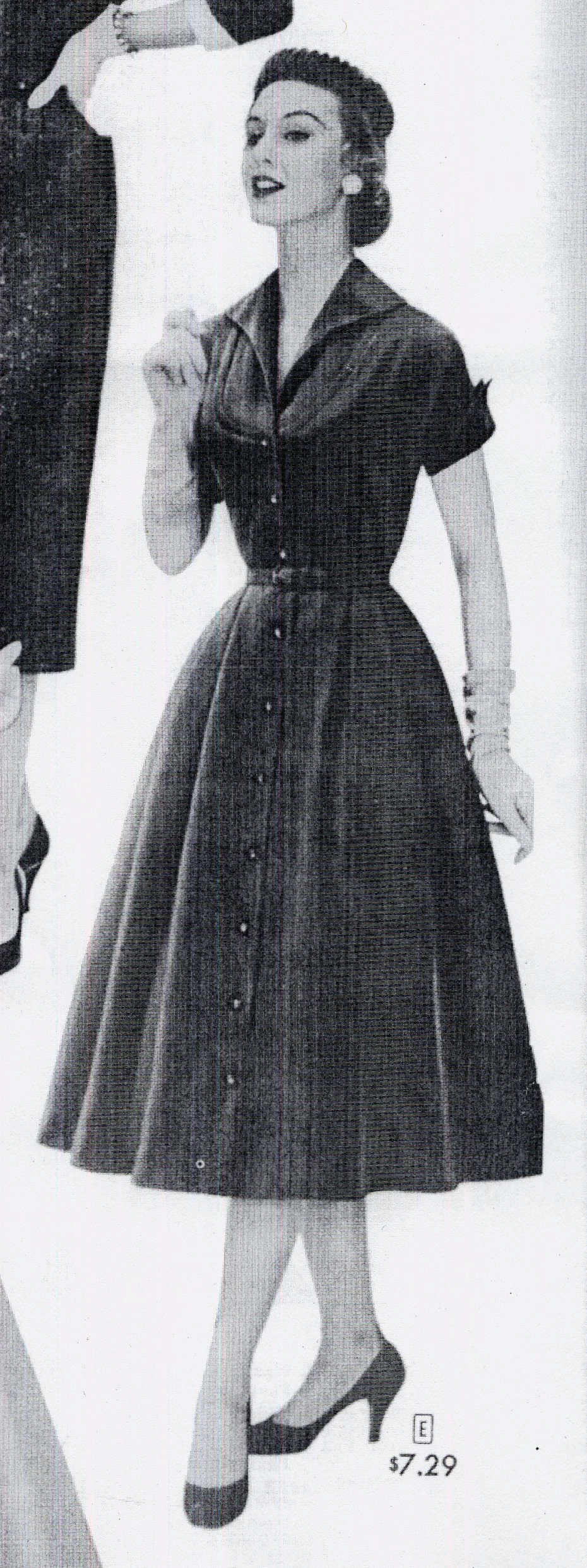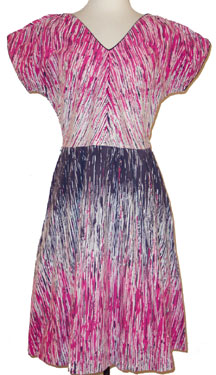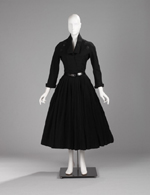IDENTIFICATION
WHAT IS IT?
CLASSIFICATION BASED ON:
FUNCTION, dress
ON MATERIAL,
night/formal dress
ON CONSTRUCTION,
low quality coat dress
AUTHENTICATION: The dress was
sold as being from the fifties.
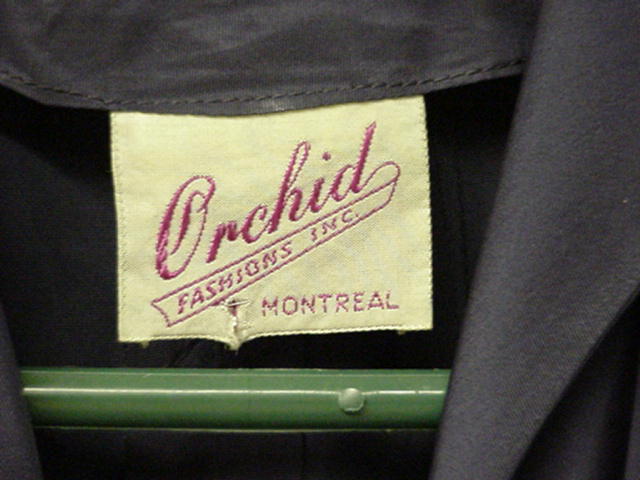 |
The
style of the label's design is not contemporary . I could not find the store in the
yellow pages, so, probably, the store does not exit anymore.
The label was made
in Switzerland.
|
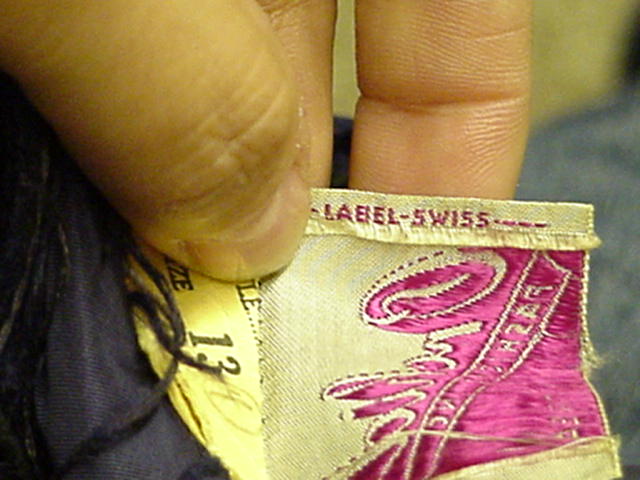 |
|
|
|
Dresses
from 1954's Sears Catalogue (Canada) |
|
|
|
|
|
A dress from the 50s with similar shape |
|
FUNCTION
The
main function of the dress, as part of the clothing system, is utilitarian,
both at the physical and social level. Physically it protects us
from weather and environmental conditions. Because it covers
the body, the dress allows us to interact socially, according to western
values of prudery.
Even
though, the most basic function of clothing is utilitarian, it is not the most
significant and the most invested with meanings. Through the making
of this dress someone has expressed her or his creative and aesthetics talents
and knowledge. The consumer would also have the chance to express her
personality through the choice and wear of the dress. (I use "her"
because the original consumer was intended to be female.)
The
dress can also serve emotional and psychological functions; though these are
harder to trace since they are most likely to be individual. The dress
can help its users to cope with situations, to express their state of mind ,to
conform with the masses' styles ,or to make a statement.
The
dress's design is thus, related to all this functions. The designer
might have had one, or all of these functions in mind when designing the
dress.
"The
pre-war silhouette of squared, padded shoulders and slim skirts was emphasized
during the Second World War by textile shortages and rationing resulting in
short skirts above the knee. All that changed in 1947 with the introduction of
a new style that required much more cloth and time for fabrication. Launched
by the new haute couture house of Christian Dior, the post-war fashion was
dubbed “The New Look” by the fashion editor for Harper’s Bazaar, Carmel
Snow. It was a romantic style evoking 19th century femininity: cinched-in
waists, rounded shoulders, and long full skirts. “The New Look” heralded a
clear end to war-time hardship, and a dramatic change from the functional
fashions that prevailed during the War. Immediately taken up throughout Europe
and North America, “The New Look” ushered in the feminine fifties. The new look remained fashionable
for about ten years, well into the late 1950's.
It was a time when
women, here and abroad, looked to European couture design for fashion
leadership and wore, copied, and emulated its elegance and glamour.
These same
years saw rapid cultural, social, and economic expansion in post-war Canada.
Couture clothes, from day suits to formal evening gowns, were considered
essential dress, requisite for participation within the social season.
Attendance at the numerous public, private, social, and fund-raising events in
Toronto required the style and quality inherent in couture, which served as a
badge of membership and operated as a professional uniform. Wearing European
couture clearly marked a woman’s sophistication, and underscored the
significance of cultural and social events in the feminine fifties."
(http://www.rom.on.ca/ee/1950_newlook.html).
“In
Canadian society of 1958...a young woman who wants her husband to be
successful and, on the way, to achieve her own social ambitions, is well
advised to work her way up through a few high-prestige organizations.... It
may be more sensible for a young matron to join one of the women’s
committees of an art gallery, symphony orchestra or museum”.
“Canadian Society,” Jeanine Locke, Chatelaine,
April 1958
Cocktail
Party: As this never takes place before five o’clock, a fussier type of
dress can be worn, short or ballet length. A very small, dressy hat is
attractive and gloves are worn but removed before a cocktail is partaken.
Small, simple handbags should be carried.”
Claire Wallace, Completely New Canadian
Etiquette Dictionary, 1960
